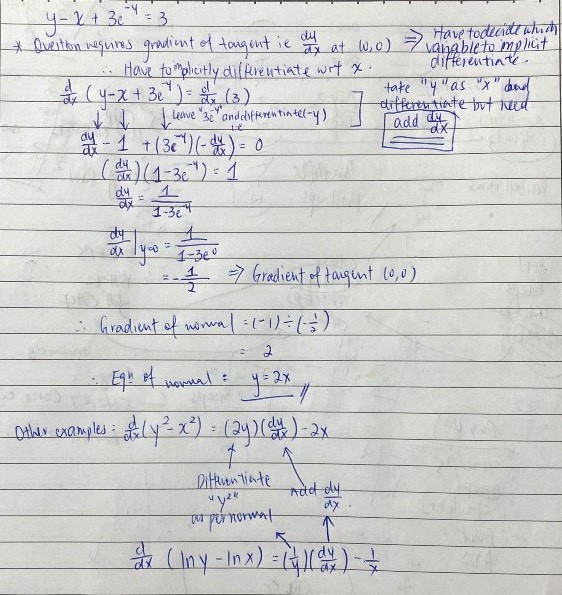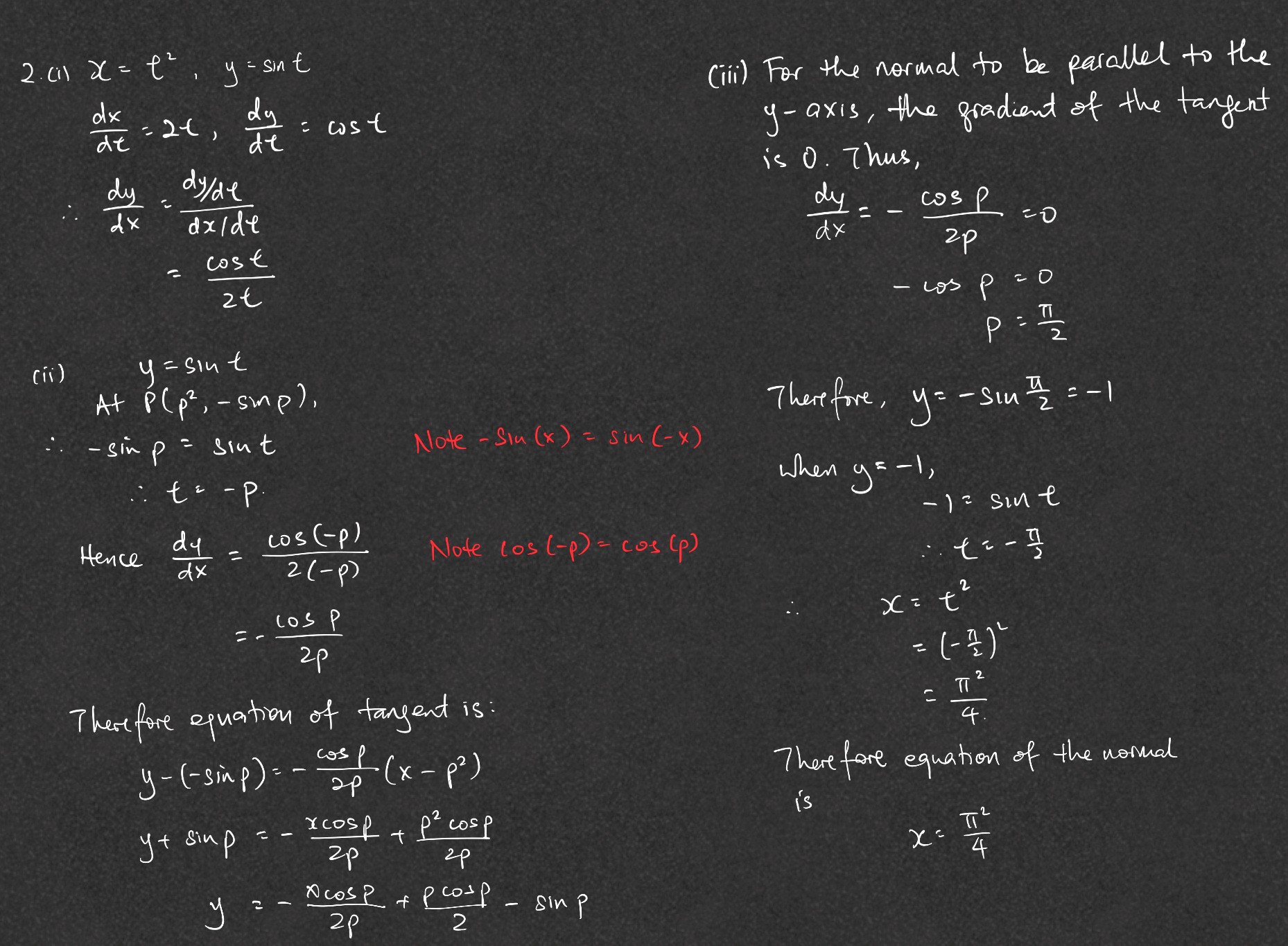Ask Singapore Homework?
Upload a photo of a Singapore homework and someone will email you the solution for free.

Question
junior college 1 | H2 Maths
2 Answers Below
Anyone can contribute an answer, even non-tutors.

I’m very confused with how implicit differentiation works:( pls help
Differentiate both sides with respect to x,
dy/dx - 1 - 3e^(-y) (dy/dx) = 0
dy/dx - 3e^(-y) (dy/dx) = 1
dy/dx (1 - 3e^(-y)) = 1
dy/dx = 1/(1 - 3e^(-y))
At (0,0), y = 0
Sub y = 0,
dy/dx = 1/(1 - 3e^0)
= 1/(1 - 3)
= -½
This is the gradient of the tangent to the point (0,0)
Gradient of the normal = -1/(-½)
= 2
Since the normal passes through the point (0,0), the y-intercept is 0.
Equation of a straight line is y = mx + c
The normal to the curve is a straight line. In this case the gradient of the normal is 2 and the y-intercept is 0. So m = 2 and c = 0
Equation of normal is therefore
y = 2x
For example, let's say y = x²,
and dy/dx = 2x
Then y³ = (x²)³ = x^6
If you were to differentiate y³ with respect to y, you would get 2y².
if you were to differentiate x^6 directly with respect to x, you would get 6x^5 directly.
But if you were to differentiate the form (x²)³, you'll use the chain rule instead, and
d/dx (x²)³
= 3(x²)²(2x)
= 3x⁴(2x)
= 6x^5 ①
Now, if you were to differentiate y³ with respect to x instead,
You'll have to differentiate y³ as well as the the term y as per the chain rule, since y is a function of x.
so d/dx (y³)
= 3y² dy/dx
= 3(x²)² (2x)
= 3x⁴ (2x)
= 6x^5
Notice we are doing the same steps as in ①
See 2 Answers





